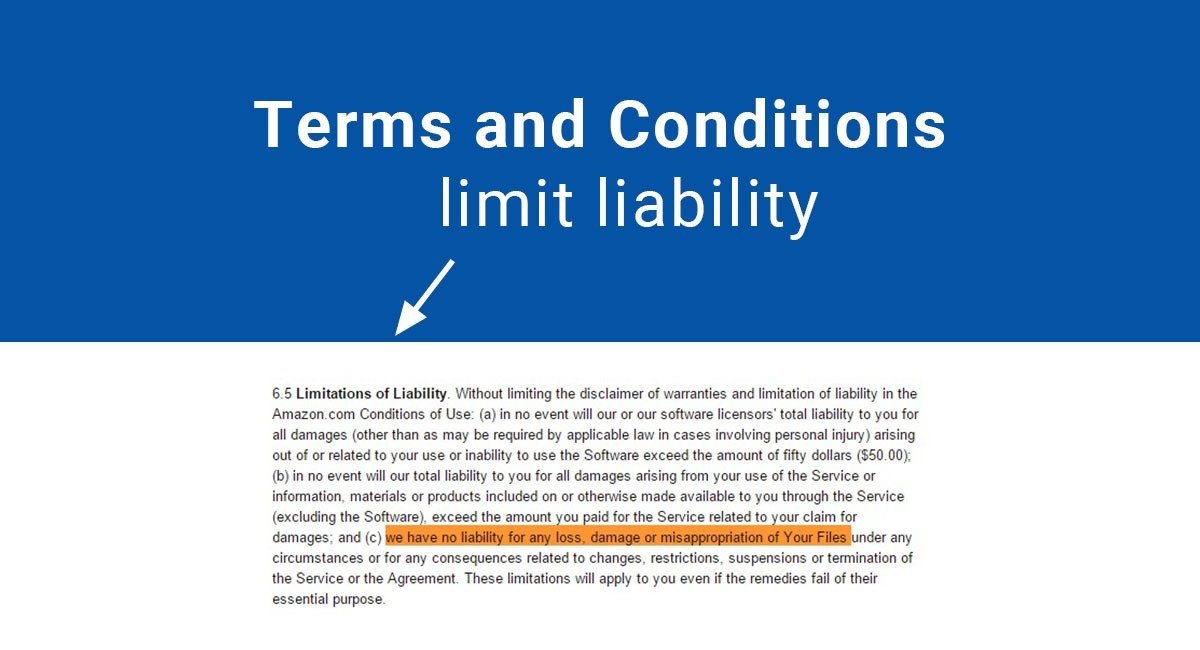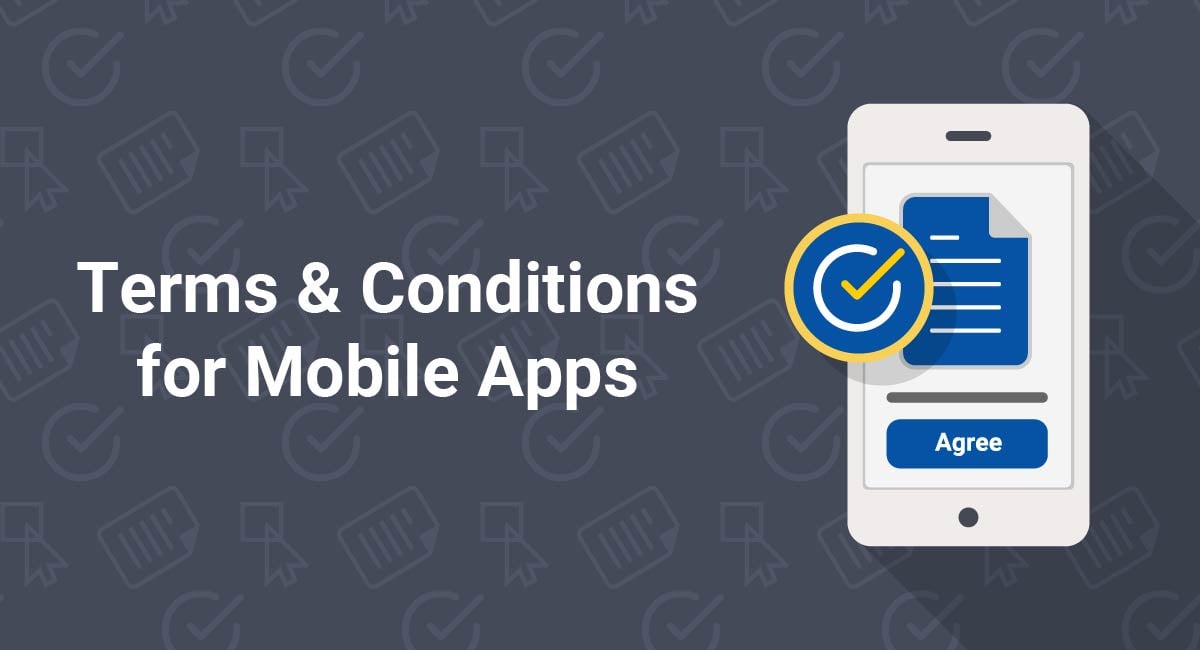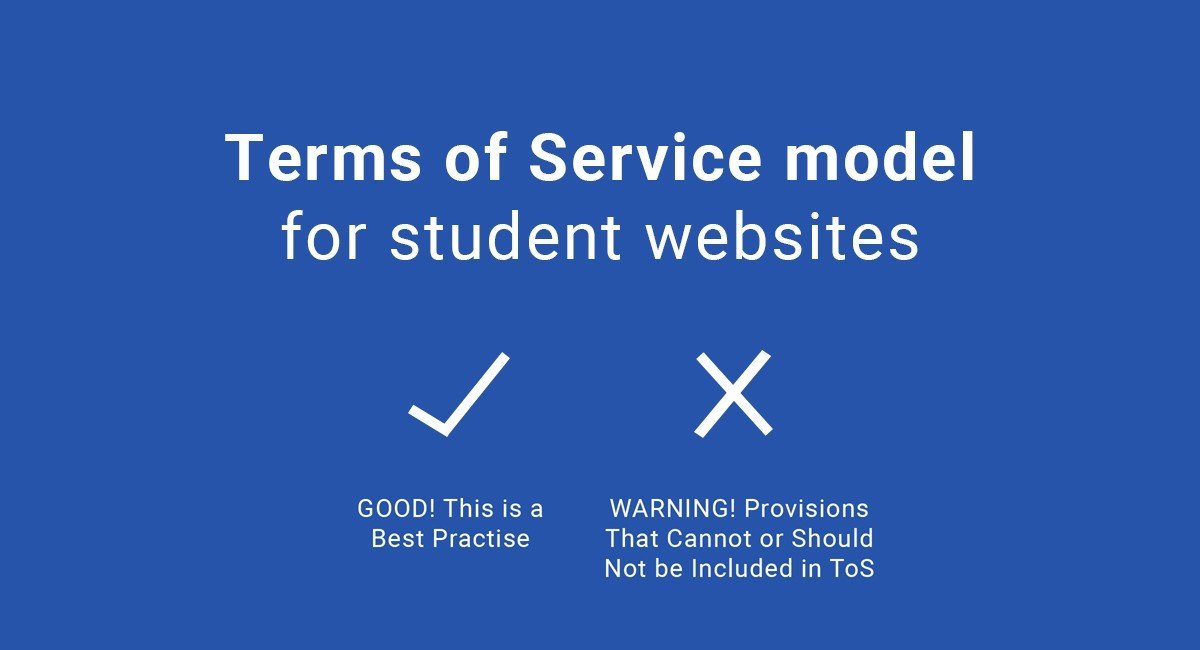When you design that new hot app or offer services on your websites, look for a Terms & Conditions agreement to protect your business.
Anyone who uses the web comes across these legal agreements, normally with a checkbox that simply states "I agree to the terms and conditions."
Think of the Terms and Conditions agreement as the ground rules for users to using your website or app.
This legal agreement the sets rules and guidelines to protect users' data, prevent abuse, and protect you, as the developer of a website/mobile app, and your company from liability.
Why you need a Terms & Conditions Agreement
A Terms and Conditions agreement will define your duties as the provider of the online service and expectations for your users.
Depending on the nature of your website and/or mobile app, this agreement can also include other considerations such as subscription fees (if your app is a SaaS), auto-renewal fees, and limitations for users.
Specifically, this agreement will often address:
- User rights and responsibilities, including what's characterized as misuse
- Payment details, if applicable
- Restricted conduct for users
- Opt-out provisions
- Notice of modification of any terms
- Limits to liability and damages incurred
The contents of your agreement will depend primarily on your industry and its best practices.
For example, if you do not intend to have a paid subscription option for your website/app and all services that you provide through the website/app are free or just presentational only, you don't need terms regarding payments.
If your business doesn't facilitate interaction between users or has user-generated content, it's unlikely you require conduct standards, such as an Acceptable Use Policy.
Your Terms and Conditions agreement should be individualized. The terms required of Tinder, YouTube, and other well-known websites may not necessarily good for your business.
This is why you shouldn't copy-paste a legal agreement from another website.
At a minimum, in this agreement, you likely want to define some key terms, define what constitutes misuse, give procedures for users how to cancel their accounts (if accounts are permitted), and state any limits on liability and damages.
You may also wish to be proactive. For example, if you believe your app will develop to a point where it collects personal data on users, adding in a Privacy Policy and references it in the Terms and Conditions now will save you additional steps later.
Possible liability issues
Being ground rules, this kind of legal agreement empowers your business to better control the use of your website or mobile app. In it, you can include who you allow to access it (limiting it to an age group, for example) and what people are allowed to do with it.
Without these guidelines and these rules, you may not have grounds to enforce your standards and that can leave you and your company vulnerable to liability in the areas that follow.
Privacy
A Privacy Policy is a separate agreement that you need to have if you collect personal information from users.
However, a Privacy Policy can also be contained within the Terms and Conditions agreement's text or it can reference through the Terms and Conditions agreement's text through a link.
If your website/app collects personal information from users, you likely need to include a Privacy Policy.

A Privacy Policy agreement is different than the Terms and Conditions one. This agreement outlines why a business collects the information and how it will use the information.
Clauses related to privacy or a reference to the Privacy Policy can prevent information misuse by abusive users.

If you use the personal information of users correctly as defined within your own Privacy Policy, it can prevent some of your abusive users from claiming that you abused their personal information.
Subscription fees
Automatic renewal and subscriptions can be problematic for SaaS businesses --especially if you do business in a jurisdiction that discourages this practice.
If your service address in-app purchases or subscriptions renewal, adding key clauses related to your subscription plans or renewals can be essential to preventing liability.
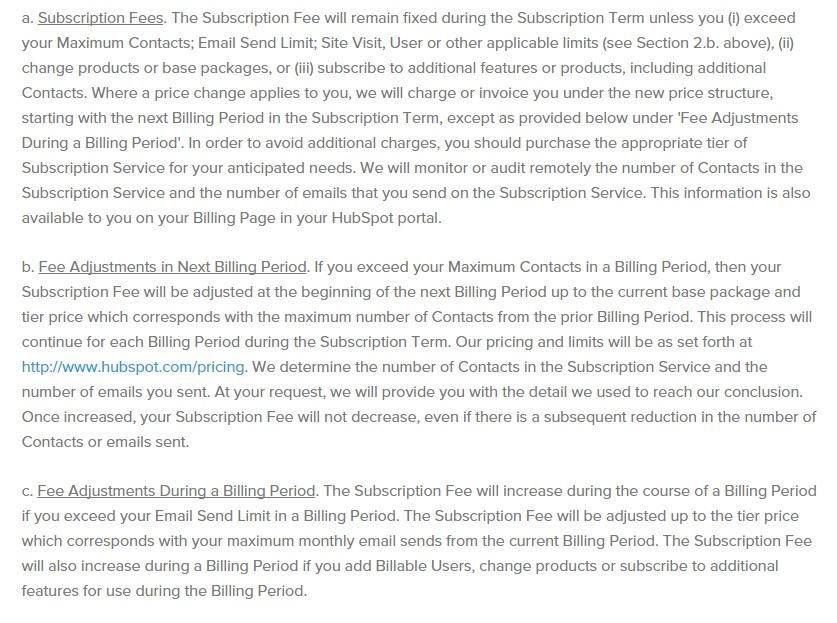
In the U.S., 16 states have laws controlling auto-renewal of subscription-based services.
California has the strictest auto-renewal law. There cannot be any automatic charges on credit cards, debit cards or bank accounts without a consumer's explicit consent.
When orders are renewed, the terms must be "clear and conspicuous" and presented in a larger font.
If you include an auto-renewal in your services, your clauses related to this or your Terms and Conditions agreement should be in large or contrasting type and have an embellishment that draws attention to them.
The clauses in your agreement should also include how the consumer can cancel the subscription.

Lawsuits first appeared in 2013 mainly against the auto-renewal policies of music and video streamlining policies.
There's now a renewed interest in these kind of actions. In 2015, Tinder faced legal scrutiny in California courts when it imposed a $2.99 per month user fee without being upfront about the new charges.
Described frequently as a 'bait and switch', the lawsuit demonstrates the liability that could be imposed on your company if your Terms and Conditions are not considered clear enough for your consumers to comprehend them.
Data scraping
Screen or data scraping is the process of capturing visual data from a website or app and using it for any kind of purpose.
Data scraping is frequently automated and the data that you provide through your website/app could be used for another purpose, a purpose that you didn't intend or commercial purposes that you didn't authorize.
This is different from privacy concerns in that this data is usually public.
Many times, companies will agree to license data to one another in order to support a free flow of information. These agreements also involve paid licensing fees.
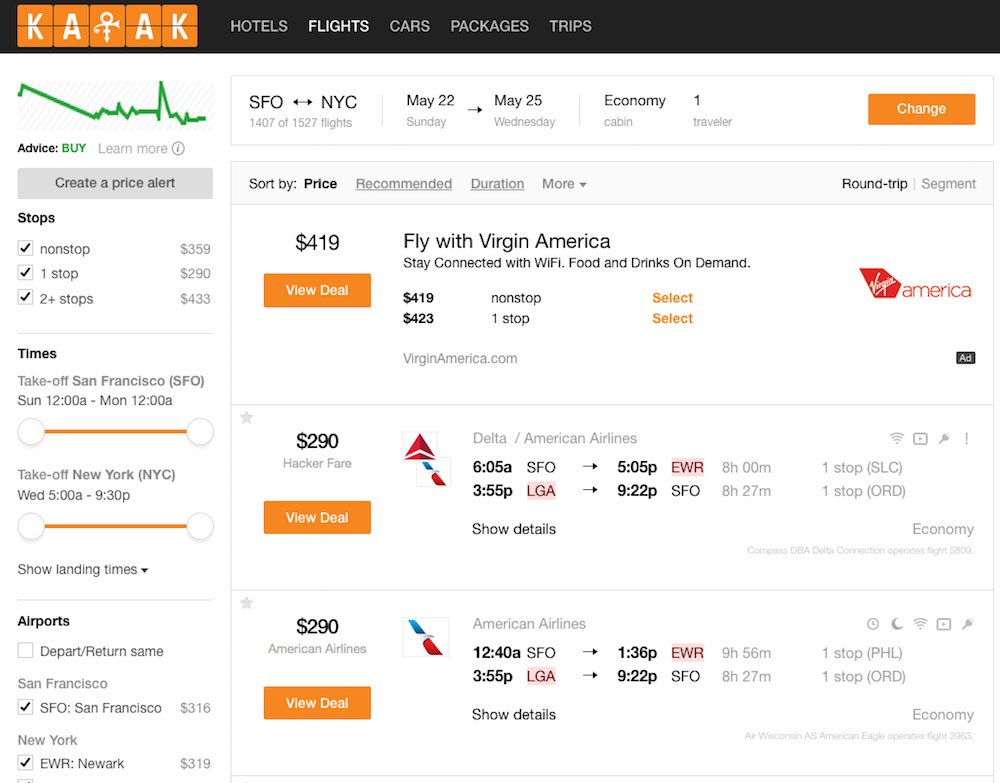
For example, Kayak maintains contracts with other websites and apps in order to use their data for its own purposes. It participates in authorized data scraping.
However, if another party uses your hard-earned data for their own purposes and does not compensate you, this takes advantage of your business.
That's why a Terms and Conditions will frequently contain provisions against data scraping.
How to insert limitation
Employing the right protection for your business - either your website/app or the data you on your website/app - depends on having the correct clauses in your Terms and Conditions and securing the means to enforce it.
Important clauses
As stated previously, you at least want essential terms, any definitions of misuse and limits to damages in your Terms and Conditions agreement.
However, for most complex websites or apps, these minimum standards are not going to be adequate. If your business is far more complex, your efforts likely require more protection than just the basics.
Subscriptions fees and auto-renewal are enjoying new popularity in lawsuits.
Besides Tinder, SiriusXM paid damages in a settlement program after plaintiffs claimed it engaged in unfair billing practices.
LifeLock and Neopets also faced civil liability when their billing practices were not considered transparent enough to meet the burdens prescribed by California law.
If you're promoting a subscription service be sure to:
-
Clearly define any "Free Trial" periods.
Consider emailing consumers to remind them when their free trial is ending. This could provide further assurance against liability.
-
Present clear billing terms.
Whether the charges occur monthly, quarterly or yearly, state so in your Terms and Conditions agreement.
You can also include the amount charged or at least provide a link in agreement with the different subscription plans you maintain.
-
Include an opt-out or cancellation policy.
You need to give consumers an option to cancel their subscription, especially if you offer a free trial first.
This also needs to be clear and conspicuous. You could try to highlight it in your Terms and Conditions.
-
Include limits of use.
For an app that functions like Tinder, that has user-generated content, including limitations on use can create a safer space that gives you the authority to remove abusive users from using your website/mobile app.
Since the success of your app will depend on your users having a positive experience, do not underestimate these standards.
-
Clauses related to data usage or restrictions on data scraping.
Data scraping policies often blend into Terms and Conditions agreements very well so if a user accepts it through the clickwrap method, you have grounds to pursue them if they misuse your data.

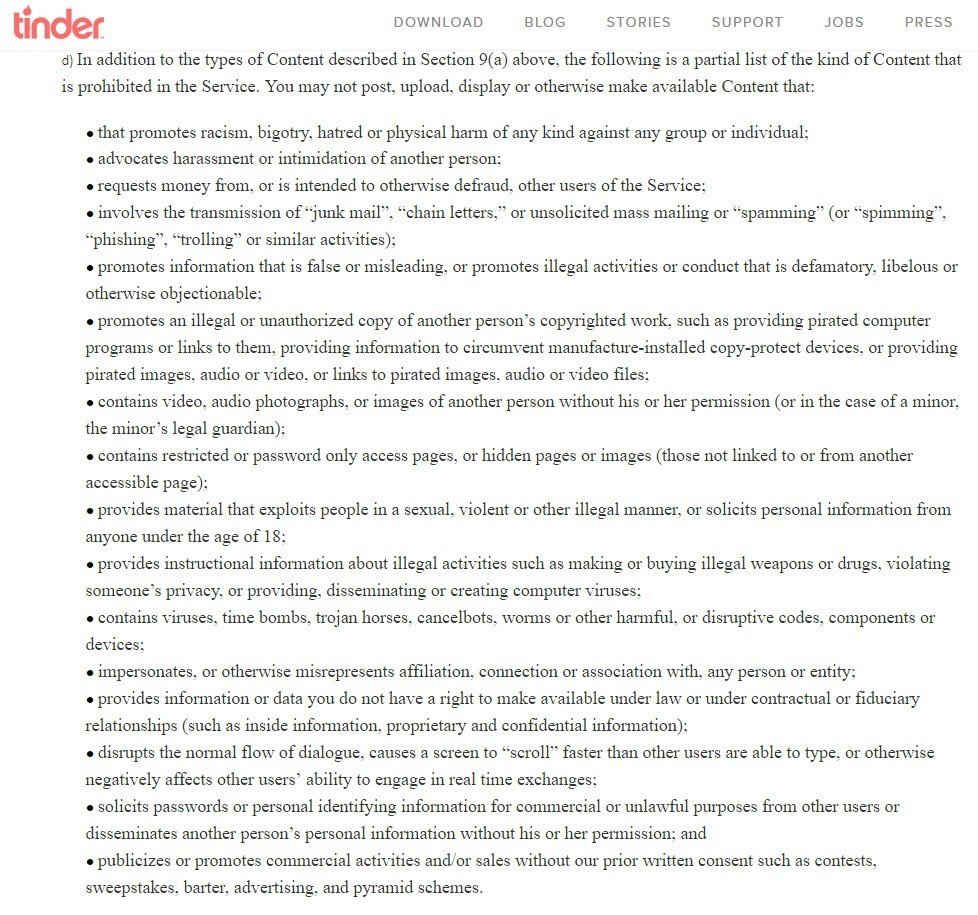
Click-wrap vs browse-wrap
The click-wrap and browse-wrap methods will ensure the enforceability of your Terms and Conditions agreement.
Browse-wrap makes the agreement accessible. This method can be described by the mere presence of Terms and Conditions and a Privacy Policy on the website.
The links to these legal agreements are normally in the footnotes or headnotes of a website or located under another "About Us" type of link or page. In order to make them noticeable, some companies will highlight or bold the text.
Basically, it just needs to be accessible if someone wishes to review them. However, that does not guarantee that people will read the terms.
Clickwrap is more direct. When a user signs up on your website or app, it's the provision with a checkbox that states "I agree to the Terms & Conditions" with a link to those terms in the text.
If a user checks that box and moves ahead, it's normally assumed the terms were read and understood. Since this method is more interactive than the browse-wrap method, it's assumed that the user at least reviewed the terms before checking on that box.
Mobile apps, for example, commonly make clickwrap mandatory before users can move forward to test an app or continue to a specific section of an app.
Since you'll not have a cause of action or grounds for other decisions without the Terms and Conditions agreement being accepted by your users, the clickwrap is usually more reliable to be used.
However, there are subtleties that can be overlooked and render your clickwrap unenforceable.
A Central District of California case, Friedman et al v. Guthy-Renker, LLC, compared an earlier clickwrap agreement to a later one.
The earlier set of terms lacked links to agreements. Users who signed up for the subscription under those terms were not held to their account charges and Guthy-Renker was ordered to compensate them.
However, users who set up accounts under the later version of the clickwrap were held accountable because that version included links to the agreement and made the agreements accessible.
When users clicked "Agree to Terms", the court ruled they were held to those provisions.
In contrast, links stating "Learn More" or "More Plan Details" may not be considered adequate.
In another California case, Savetsky v. Pre-Paid Legal Services, the links cannot be merely informational. It must be clear that the links lead to terms that control the transaction.
While a link's text as "Terms & Conditions" is helpful, the court found "Learn More" to be misleading.
When you compile links to your Terms and Conditions (or any other legal agreements), consider sticking with the common legal titles for these documents: "Terms & Conditions", "Privacy Policy" and "Membership Agreement" when the latter applies.
These agreements link a transaction to the rules that apply to it. When you try to simplify it with "Learn More", courts are likely to see that as an attempt to educate--not make a solid contract with your users.
In summary, Terms and Conditions can keep the use of your website and mobile app within your control. The agreement can enforce duties, responsibilities, and rights for all parties connected.

Comprehensive compliance starts with a Privacy Policy.
Comply with the law with our agreements, policies, and consent banners. Everything is included.
